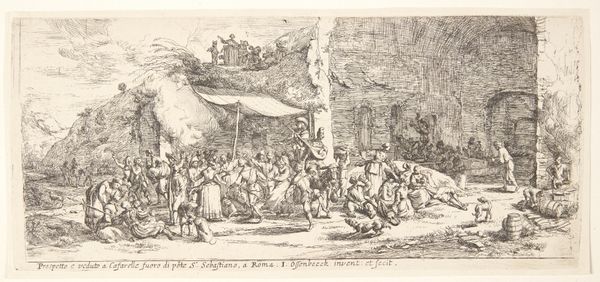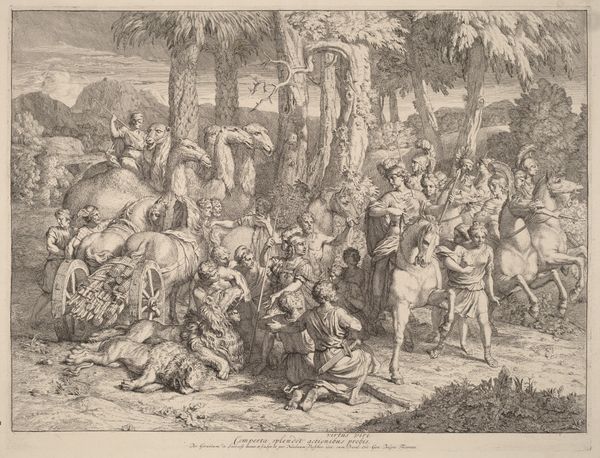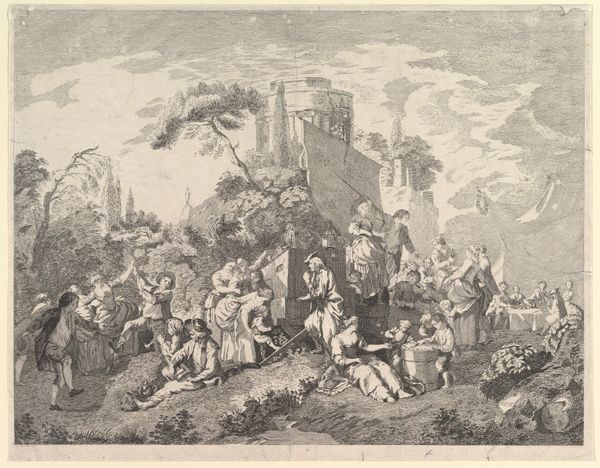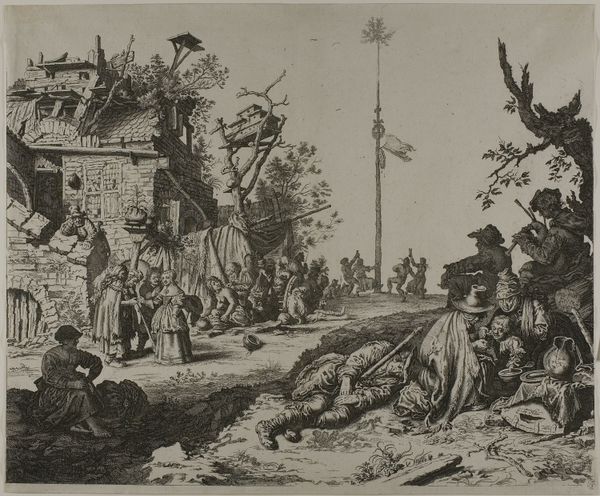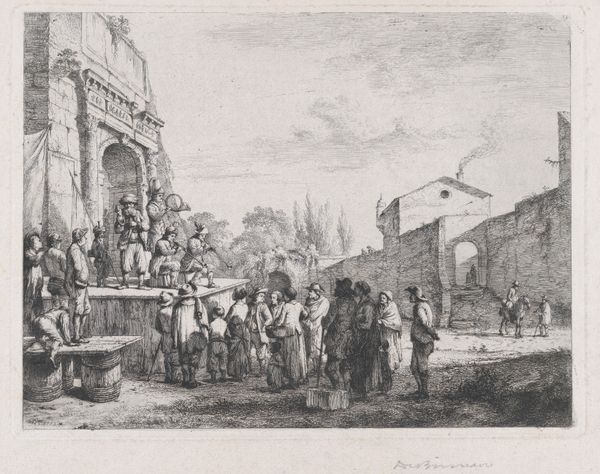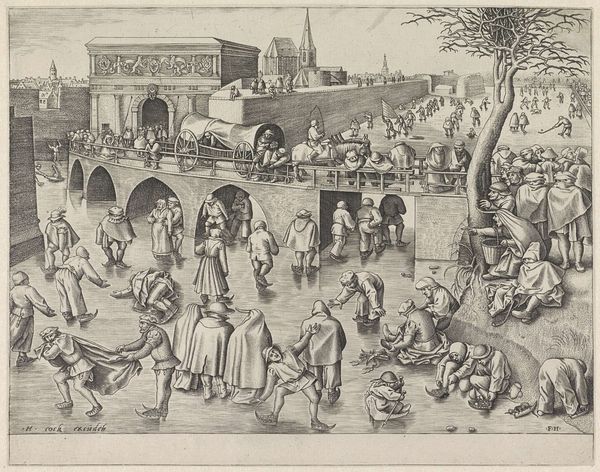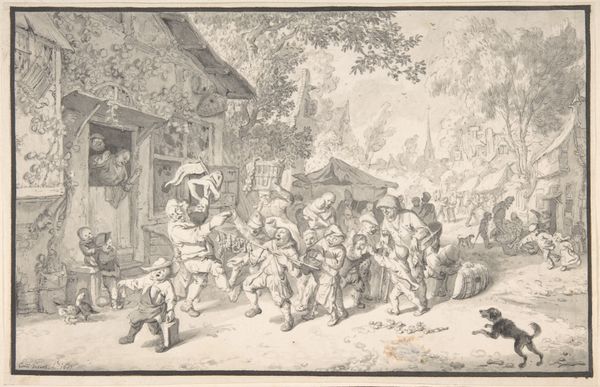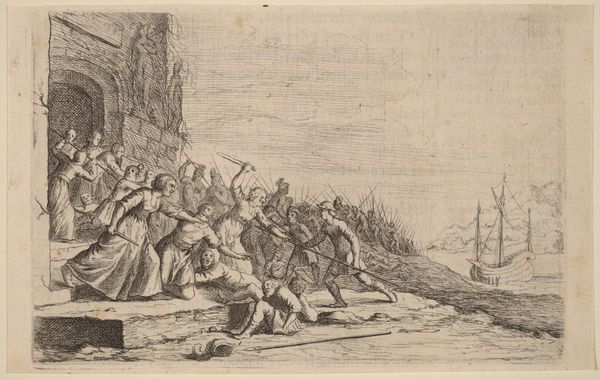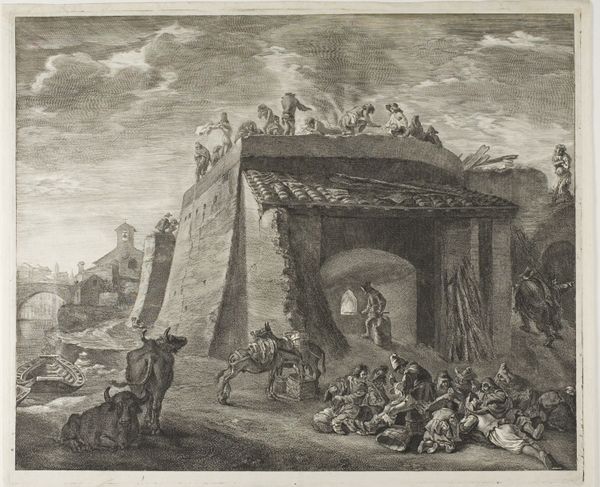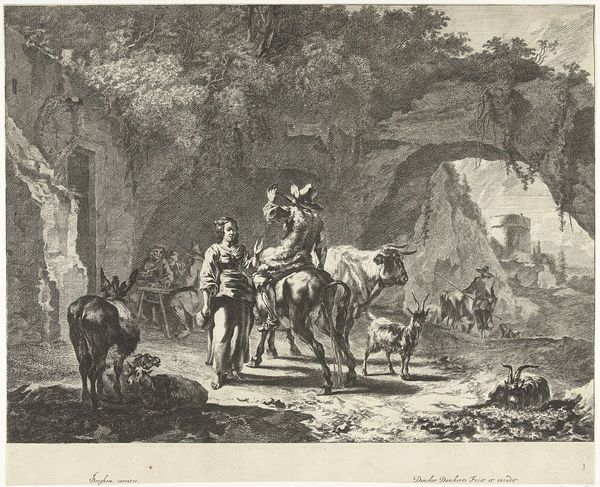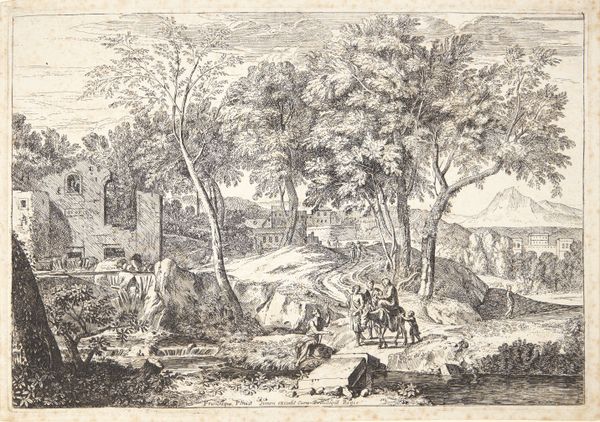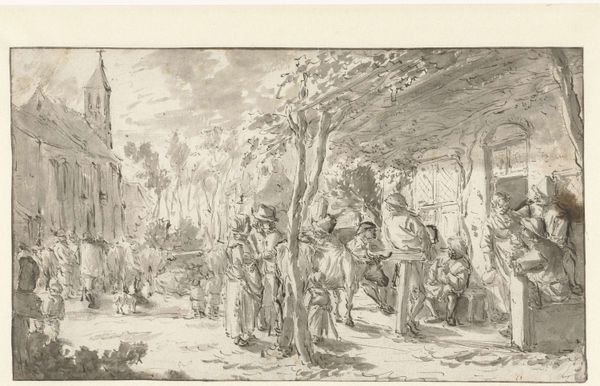
drawing, print, etching, ink
#
drawing
#
ink drawing
#
narrative-art
#
baroque
# print
#
etching
#
figuration
#
ink
#
cityscape
#
genre-painting
Dimensions: 4 7/8 x 7 3/4 in. (12.38 x 19.69 cm) (plate)
Copyright: Public Domain
Curator: Up next is an etching and ink drawing from around the 17th century titled, Village Fair with Charlatans. The work is attributed to Constantijn van Renesse and is currently held in the collection here at the Minneapolis Institute of Art. Editor: Immediately, what strikes me is the density of the composition—it feels incredibly busy, teeming with activity, all rendered in a very linear, almost frantic, style. Curator: Precisely, the line work constructs the composition but also lends a particular tone to the scene, as you astutely noted. Consider how Renesse utilizes varied hatching techniques. Observe the heavier, darker lines in the lower left corner which create depth and shadow, guiding our eye towards the figures on the elevated stage. The artist is building tone and suggesting form in very considered ways. Editor: Speaking of construction, let's consider the socio-economic implications of a piece like this. Prints allowed images to circulate widely and cheaply. A village fair becomes a commodity itself, reproduced and consumed by a different class of people who were probably quite far removed from this type of labor and exchange. How are those market dynamics shaping the content and technique of this piece? Curator: That’s compelling, but consider that while the distribution method impacts accessibility, the imagery itself invites interpretations tied to moral and philosophical dimensions. For example, charlatans peddling false goods can be read as symbolic critiques of deceit or the transience of earthly gains. The composition is very baroque and busy. But its theme speaks to our constant human concerns with veracity and illusion. Editor: I suppose that makes sense, though I would come back to my emphasis on how such a reading often requires detaching it from the messy reality of the material world of its making, sale, and distribution—aspects which directly inform its meaning. Can we ignore that these prints themselves might be "charlatan-esque," profiting from images that bear only a superficial likeness to lived realities? Curator: Perhaps a blend of both considerations is vital here. It is an item produced with distribution processes and material costs and decisions at its center but its message contains multiple interpretations that depend on both the form and production in the baroque tradition. Editor: An equilibrium, maybe! In either case, food for thought for us both, indeed! Curator: Precisely. We hope our perspectives gave you a deeper appreciation for Renesse’s “Village Fair.”
Comments
No comments
Be the first to comment and join the conversation on the ultimate creative platform.
